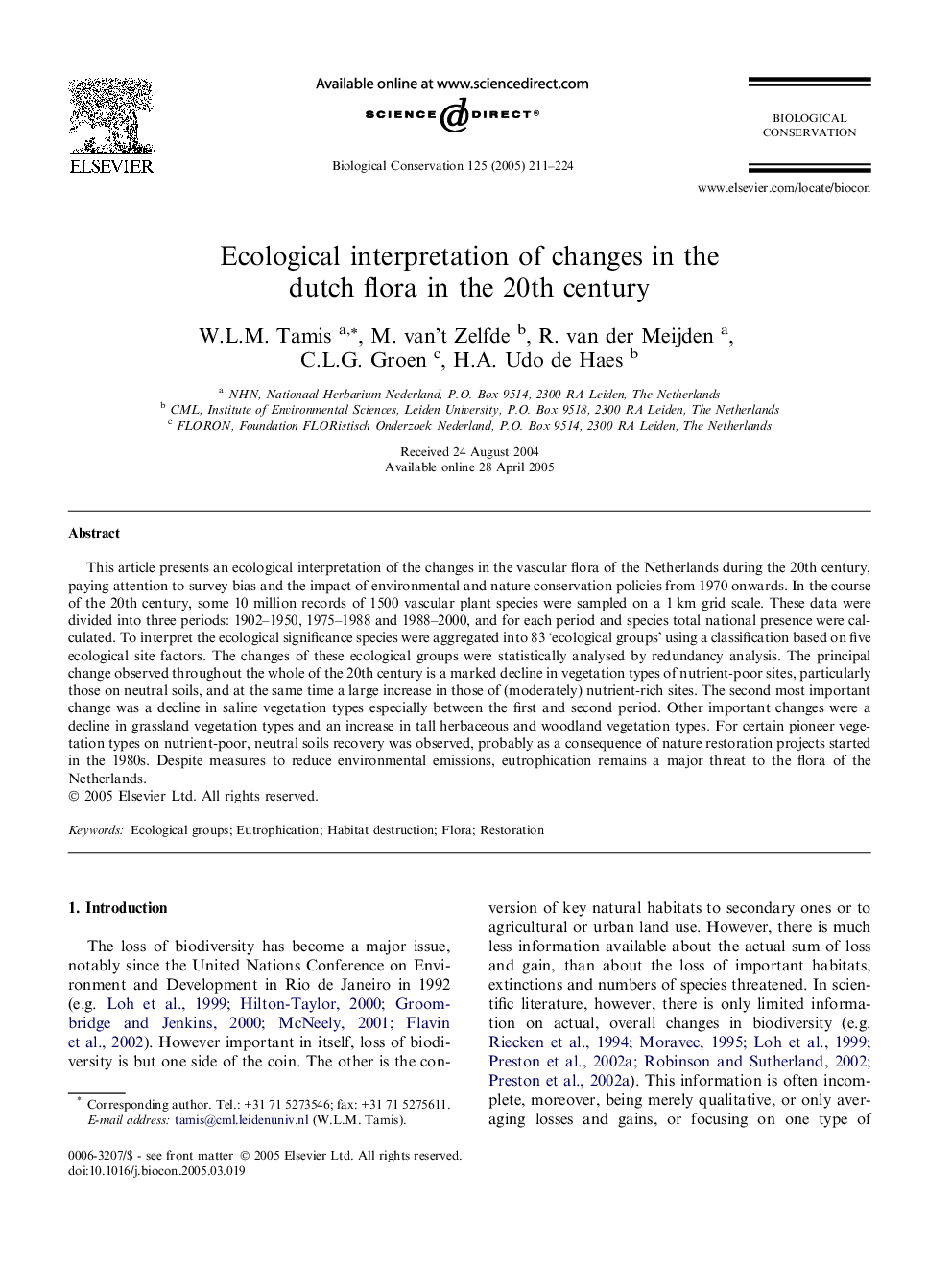| Article ID | Journal | Published Year | Pages | File Type |
|---|---|---|---|---|
| 9446092 | Biological Conservation | 2005 | 14 Pages |
Abstract
This article presents an ecological interpretation of the changes in the vascular flora of the Netherlands during the 20th century, paying attention to survey bias and the impact of environmental and nature conservation policies from 1970 onwards. In the course of the 20th century, some 10 million records of 1500 vascular plant species were sampled on a 1Â km grid scale. These data were divided into three periods: 1902-1950, 1975-1988 and 1988-2000, and for each period and species total national presence were calculated. To interpret the ecological significance species were aggregated into 83 'ecological groups' using a classification based on five ecological site factors. The changes of these ecological groups were statistically analysed by redundancy analysis. The principal change observed throughout the whole of the 20th century is a marked decline in vegetation types of nutrient-poor sites, particularly those on neutral soils, and at the same time a large increase in those of (moderately) nutrient-rich sites. The second most important change was a decline in saline vegetation types especially between the first and second period. Other important changes were a decline in grassland vegetation types and an increase in tall herbaceous and woodland vegetation types. For certain pioneer vegetation types on nutrient-poor, neutral soils recovery was observed, probably as a consequence of nature restoration projects started in the 1980s. Despite measures to reduce environmental emissions, eutrophication remains a major threat to the flora of the Netherlands.
Related Topics
Life Sciences
Agricultural and Biological Sciences
Ecology, Evolution, Behavior and Systematics
Authors
W.L.M. Tamis, M. van't Zelfde, R. van der Meijden, C.L.G. Groen, H.A. Udo de Haes,
